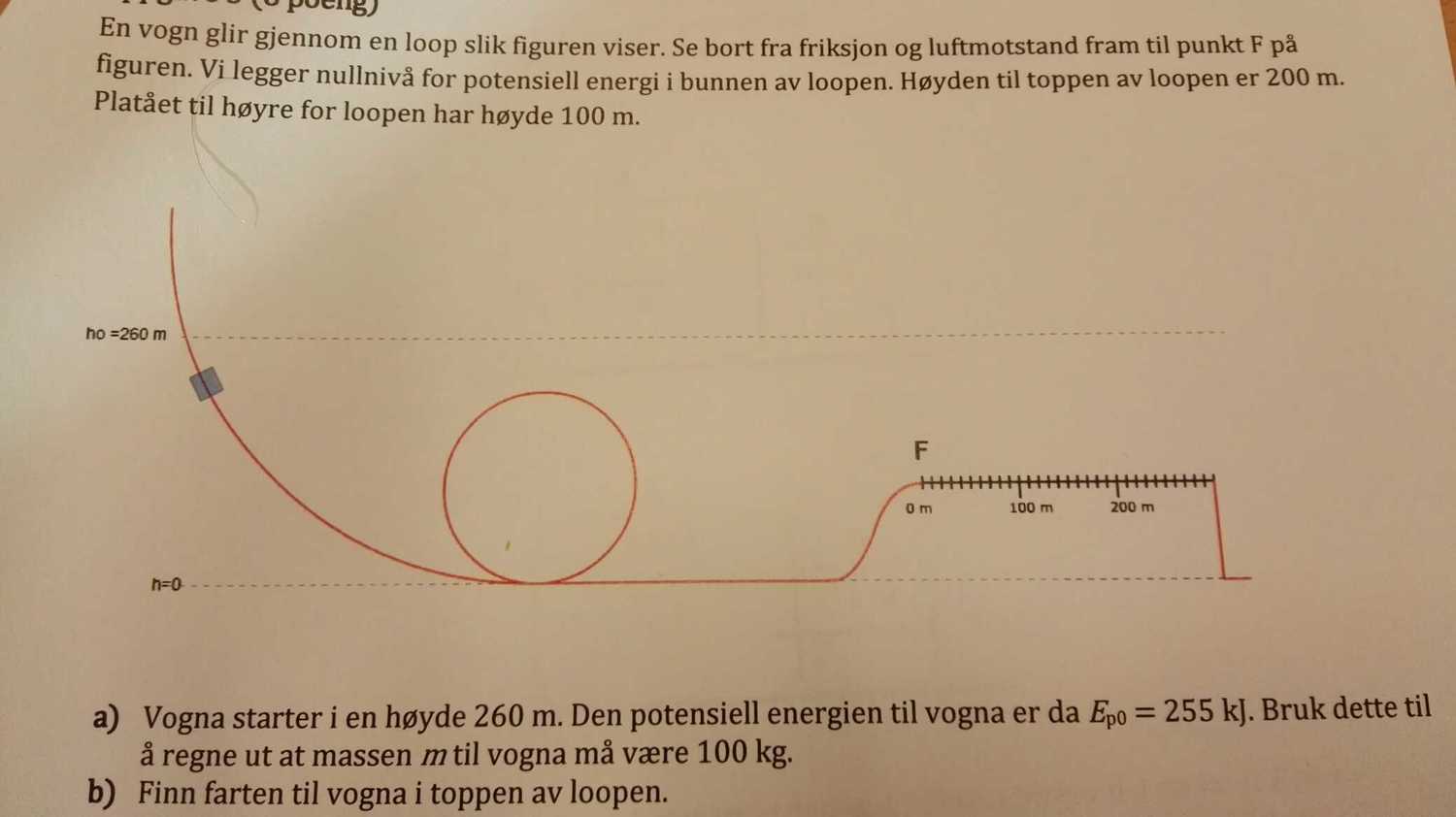A) the wagon starts at an altitude 260 m. The potential energy of the wagon is then 255 kj .Use this to calculate the mass m to the wagon must be 100 kg
b Find the speed of the wagon in the top of the loop.
On the plateau, point F on the figure, it puts friction on the wagon. The carriage stops after it has moved after the stretch s = 229 m after point F.
C) How big is the friction number between the plateau and the cart?

Solution:
Part a)
$ 255KJ = 255 \times 1000 J $ = Potential energy = $ mgh = m(9.8)(260) $.
Therefore $ m = 100.08 kg $.
Part b)
When the wagon start, it has 0 kinetic energy (it hasn't started yet, no velocity there) and 255kj potential energy.
At the top of the loop, it has potential energy $ mgh = 100 \times 9.8 \times 200 = 196000 J = 196KJ $, the rest must be accounted for as kinetic energy due to energy conservation.
The kinetic energy is then $ 255 - 196 = 59KJ = 59000 J = \frac{1}{2}mv^2 = 50v^2 $. Therefore the velocity is $ 34.35... ms^{-1} $.
Part C) Using energy conservation we similarly compute the velocity at the beginning of the track to be $ 56.03... ms^{-1} $.
According to the Coulomb friction model, the friction is constant along the slide, which means we will have a constant deceleration. The v-t graph of the wagon should look like this, and at this point we do NOT know the x-intercept
The area under curve is the distance travelled, and that we know it is 229m, therefore, the x-intercept is calculated by solving the triangle area.
$ \frac{1}{2}56.03 \times t = 229 $, so we solve $ t = 8.17...s $.
With that, we know the deceleration has to be $ \frac{56.03}{8.17} = 6.86... kgms^{-2} $
Finally, $ F = ma $ give us the friction as $ 100 \times 6.86... = 685.59 N $.

No comments:
Post a Comment